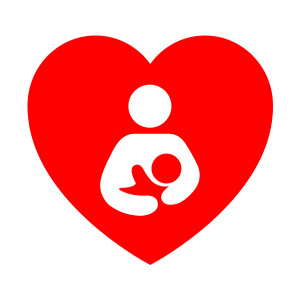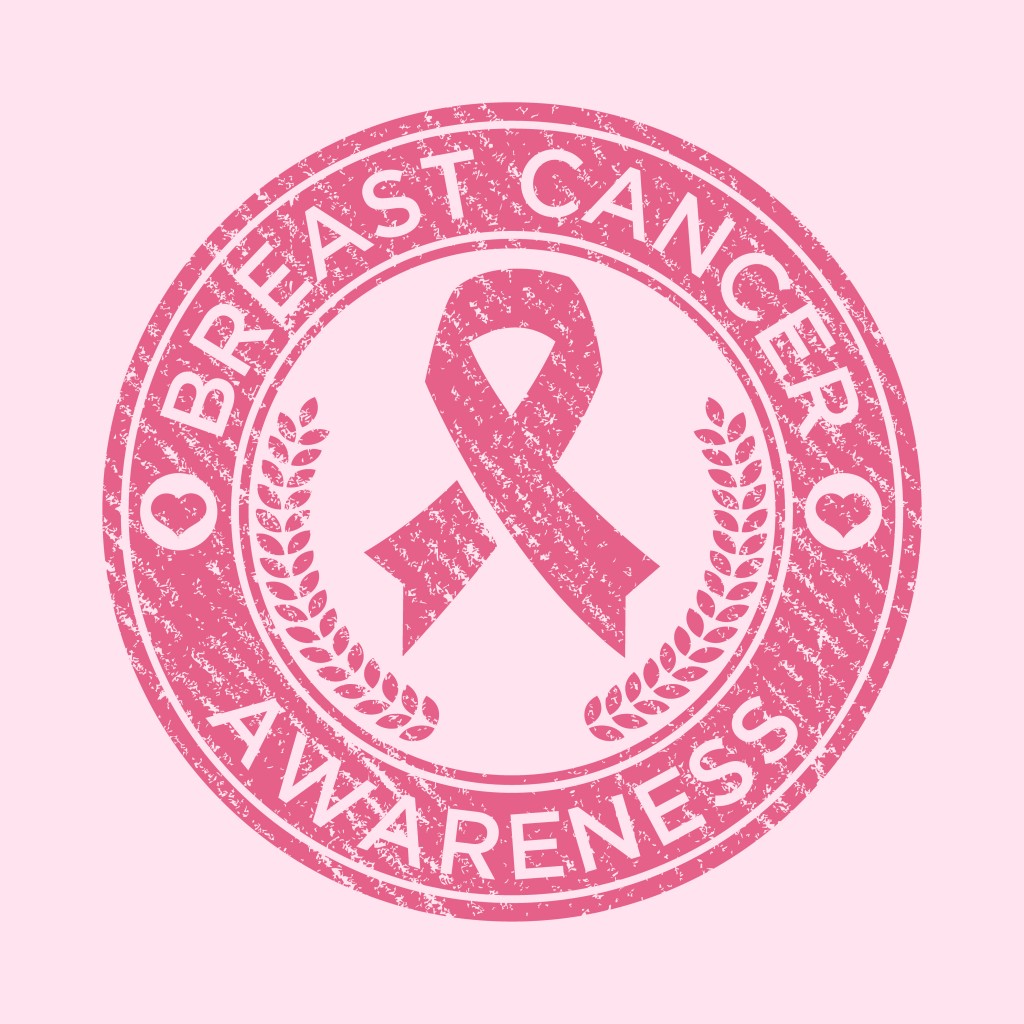 Americans across the country have embraced October as Breast Cancer Awareness month. Many of us spend the month of October wearing pink bracelets, signing-up for 5K runs, and watching professional athletes incorporate pink gear into their uniforms. Our heightened level of awareness and consideration of breast cancer and research funding is essential to finding a cure, but how many of us spend time in October considering our own health and potential risk for being diagnosed with the disease? This October, continue to wear your pink accessories and donate to your local fundraisers, but in honor of breast cancer awareness month, learn the warning signs and symptoms of breast cancer so that you can remain healthy too.
Americans across the country have embraced October as Breast Cancer Awareness month. Many of us spend the month of October wearing pink bracelets, signing-up for 5K runs, and watching professional athletes incorporate pink gear into their uniforms. Our heightened level of awareness and consideration of breast cancer and research funding is essential to finding a cure, but how many of us spend time in October considering our own health and potential risk for being diagnosed with the disease? This October, continue to wear your pink accessories and donate to your local fundraisers, but in honor of breast cancer awareness month, learn the warning signs and symptoms of breast cancer so that you can remain healthy too.
Signs and Symptoms
Thanks to advances in mammography screenings, most breast cancers in the United States are identified at an early stage before symptoms are visible. Still, not all cases of breast cancer are identified through mammograms, which is why it is important to understand the warning signs so that care can be sought as soon as possible. While symptoms can vary among women, the most common signs include:
- A lump, hard knot, or thickening inside the breast or underarm area.
- Swelling, warmth, redness or darkening of the breast.
- Isolated pain in the breast that does not go away.
- A change in the size or shape of the breast.
- A dimpling or puckering of the skin of the breast.
- A suddenly appearing nipple discharge, or a liquid leaking from your nipple, especially if it appears only in one breast, when no squeezing or pressure is applied to the breast, or if the discharge is bloody or clear, rather than milky.
- Itchy, scaly, or sore skin on the nipple, or a nipple rash.
- Pulling in of the nipple or other breast skin.
When conducting a self-breast exam, pay special attention to the presence of lumps or bumps, but understand that breast tissue is naturally textured, and some women’s breasts have more naturally occurring bumps than others. Look for an even and consistent amount of lumpiness throughout both breasts to determine if what you are feeling is your normal breast tissue, or something you should question. If you do find one isolated area with a solid, hard lump, take note and speak with your OBGYN or primary care doctor. By conducting routine exams on a monthly basis, you will be more in tune with your body in case you have a sudden, newly appearing lump that may be of concern.
When to Seek Care
Contact your OBGYN or primary care doctor if:
- You identify a lump that was not present during your prior month’s self exam or that you know is newly developed.
- You find a lump or a bumpy area on one breast that does not feel similar to your other breast.
- You find a lump or bumpy area on one breast that does not feel similar to the rest of the tissue on that same breast.
It is always in your best interest to seek guidance from a health care professional if you have any concerns about the signs or symptoms listed above. While your OBGYN may tell you that what you’ve found is normal, or that it is a benign breast condition such as a cyst or fibroadenoma, having the peace of mind of knowing that you are healthy will be well worth the exam.
More
 Cancer is a terrifying word. It seems beyond our control, but the truth is that there are ways to reduce your risk of developing the disease. This October, as we reflect on breast cancer awareness, prevention, and research, familiarize yourself with those factors that can increase your risk of breast cancer, and those that, for now, are simply myths.
Cancer is a terrifying word. It seems beyond our control, but the truth is that there are ways to reduce your risk of developing the disease. This October, as we reflect on breast cancer awareness, prevention, and research, familiarize yourself with those factors that can increase your risk of breast cancer, and those that, for now, are simply myths.
Fact: Exercise can reduce your breast cancer risk, as well as improve your overall health and wellness.
Myth: Though there have been concerns that parabens found in some body care products and cosmetics may increase the likelihood of cancer, research conducted to date has not concluded that exposure to parabens is a breast cancer risk factor. More research needs to be done on this topic, but for now, science has not been able to prove that parabens increase cancer risk.
Fact: Maintaining a healthy weight can reduce your breast cancer risk. It is especially important for breast cancer survivors to maintain a healthy weight as part of their continual recovery and prevention plan.
Myth: Though media reports have tried to link plastics to cancer over the past several years, there has been no scientific proof that exposure to plastics and Bisphenol A (BPA) can increase cancer risk. Despite reports that drinking water from a plastic bottle can increase the likelihood of breast cancer, it has not yet been scientifically proven.
Fact: In some studies, long-term or high levels of exposure to tobacco smoke have indicated increased risks of breast cancer, among other risk factors.
Myth: Secondhand smoke on the other hand, has not been definitively proven to increase the risk of breast cancer.
Fact: Limiting your consumption of alcohol can reduce your breast cancer risk.
Myth: There is also currently no data to support the theory that organic foods lower the risk of breast cancer.
Fact: Eating a healthy diet full of natural fruits and vegetables, healthy grains, good fats such as olive oil, chicken, fish, beans, and only limited amounts of red meat, can reduce the risk of breast cancer.
Other factors that are not known to increase the risk of breast cancer include:
- Abortion and miscarriage
- Exposure to certain types of pesticides and industrial chemicals
- Frequent use of bras with underwire
- Breast implants
- High consumption levels of caffeine
- Frequent use of cell phones
- Hair dyes and relaxers
- Frequent migraine headaches
- Breast trauma
Other factors under study that have not yet been intrinsically linked to increased breast cancer risk, but have also not been cleared from suspicion, include:
- Use of antibiotics
- Use of aspirin
- Birthweight
- Breast size
- Whether or not a woman was breastfed as an infant
- Use of fertility drugs
- Dairy products
- Dietary fat
- Soy
- Folic acid
- Multivitamins
- Levels of Vitamin D
- Meat consumption
- Frequency of skin moles
- High stress levels
With awareness of known risk factors and a commitment to leading a healthy lifestyle, you can put yourself in the best position to remain cancer free. Understand, however, that while these factors can increase or reduce your risk of cancer, there is no complete prevention strategy yet known. As women age, their risk of cancer inherently increases, but by living a healthy lifestyle, you can improve your chances of remaining cancer free as long as possible.
At Western New York OB-Gyn we are committed to helping our patients achieve optimal health and helping them discern between myths and facts. If you haven’t seen your doctor in more than a year, call today. We are currently accepting new patients at all of our locations.
More
 If you’re about to be a first time mom, you have many decisions to make, from nursery color schemes, to who you want with you in the delivery room, to the all important baby name. As you prepare for your baby to arrive, take some time to educate yourself on the benefits of breastfeeding. August is breastfeeding awareness month, which means now is the perfect time to learn how this parenting choice can benefit both you and your infant.
If you’re about to be a first time mom, you have many decisions to make, from nursery color schemes, to who you want with you in the delivery room, to the all important baby name. As you prepare for your baby to arrive, take some time to educate yourself on the benefits of breastfeeding. August is breastfeeding awareness month, which means now is the perfect time to learn how this parenting choice can benefit both you and your infant.
Benefits for Baby
- Optimal nutrition – Research shows that breast milk offers the highest quality nutritional benefits for your infant. Your breast milk will naturally contain all of the vitamins and nutrients your baby needs in the first six months of development.
- Immune-boosting benefits – Breast milk naturally contains important disease-fighting substances that will help to build your baby’s immune system. Studies have shown that your baby will be at a reduced risk of stomach viruses, lower respiratory illnesses, ear infections, and meningitis if breastfed at least during the first six months. This protection comes from a substance called secretory immunoglobulin A (IgA), which is present in the first milk your body produces for your baby.
- Reduced risk of allergies – Infants who are breastfed are at a reduced risk of developing allergies. In particular, babies who are fed a formula based on cow’s milk or soy tend to have more allergic reactions than those who are breastfed.
- Long-term protection – Studies show that breastfeeding may reduce your child’s risk of developing certain diseases later in life, including type 1 and type 2 diabetes, high cholesterol, inflammatory bowel disease, Crohn’s disease, and ulcerative colitis.
- Like mother, like child – A woman’s breast milk is specifically tailored to meet the needs of her child. Our bodies produce IgA in response to specific pathogens that we are exposed to throughout our lives, and those lgAs will be passed on to your baby during breastfeeding, offering optimal protection from those pathogens to which you have been exposed.
- Better brain food – A study of more than 17,000 infants found that children who had been breastfed showed enhanced cognitive development, as determined by their IQ scores and other intelligence tests, over those who were fed formula.
- Reduced risk of obesity – Breastfeeding may help your baby to develop healthy eating habits from infancy that will protect him/her from developing an unhealthy weight later in life. Breastfed babies learn to eat until their hunger is satisfied, and tend to carry this healthy habit into adolescence. In addition, compared to formula, breast milk contains less insulin, which stimulates the creation of fat.
Benefits for Mom
- Mental health – Breastfeeding can reduce a new mother’s stress level and her risk of postpartum depression. The National Institutes of Health reviewed more than 9,000 study abstracts and concluded that women who did not breastfeed or who stopped breastfeeding early were at a higher risk of postpartum depression. Breastfeeding also releases the hormone oxytocin, which stimulates feelings of relaxation.
- Emotional bonding – The emotional bonding between mom and baby that occurs during breastfeeding is an important part of both the baby’s emotional development, and your connection with one another.
- Long-term protection – Numerous studies have found that the longer a woman breastfeeds, the lower her risk for developing breast and ovarian cancer.
- Assists in weight loss – While you’re pregnant, your body automatically layers on extra fatty tissue so you’ll have enough fat stores to begin and support breastfeeding. It’s true that breastfeeding can help you lose your pregnancy weight naturally without compromising either your health or your baby’s (considering you are eating healthy). Your body will burn calories to make breast milk.
If you have questions about breastfeeding, or if you are still deciding if it is the right choice for you and your baby, contact your OBGYN today to discuss your options. The doctors at Chouchani, Sayegh and Bagnarello MD are dedicated to helping you and your baby achieve optimal health.
More
 Lumps in the breast or armpit area should always be treated as serious matters. Performing self-exams or having a clinical exam or mammogram performed in a timely manner can lead to early detection and treatment, which can greatly increase chances of survival.
Lumps in the breast or armpit area should always be treated as serious matters. Performing self-exams or having a clinical exam or mammogram performed in a timely manner can lead to early detection and treatment, which can greatly increase chances of survival.
However, lumps in the breast or armpit aren’t always dangerous. Some lumps can be cysts, which may feel like a lump but is actually a small sac filled with fluid. Cysts may appear singularly or in a cluster.
Is it a cyst or tumor?
To determine if a lump is a cyst or a tumor, a healthcare professional will perform an ultrasound. This scan will allow the professional to see if the sac is hollow or filled with fluid, determining if the patient needs any sort of treatment or if the issue will resolve itself on its own.
If the lump is fluid filled, it may not require any treatment, and may also swell and retract based on the hormone cycle of the patient and the patient’s menstrual cycle. If the cyst becomes bothersome, it can be drained by a professional by first applying local anesthetic and then removing the fluid with a needle and syringe. Some cysts will re-fill, requiring them to be removed surgically or simply left alone to recede on their own.
If there is a history of cancer within the family, cysts can act as a risk factor, indicating the possibility of cancer starting in the patient’s body. However, most cysts do not indicate cancer and are almost never associated with a high risk of cancer.
Types of tumors
Breast tumors can be identified as malignant, a mass of cancerous cells that can invade and damage surrounding tissue, or benign, a mass of cells usually unaggressive towards surrounding tissue that will not continue to grow.
A tumor is often biopsied to discover whether it is malignant or benign, or if it needs to be removed from the body before it affects any other areas. Metastatic cancer is when malignant tumors spread to other parts of the body through the lymph nodes, or lymphatic system, and form secondary tumors.
Tumors are classified by grade based on the severity of the cell mutation and the likelihood that it will spread throughout the body. Breast cancer is graded on a scale of one to three with one being the lowest stage of aggression and three being the highest.
Low-grade tumors, ranked at a one, most closely resemble normal tissue, whole high-grade tumors ranked at a three look the least like normal tissue and can be extremely aggressive.
Tumor grading can help best determine a treatment plan, however tumor grades should NOT be confused with stages of cancer.
For more information on stages of breast cancer, search our patient education section of our website or visit the National Breast Cancer Foundation’s page.
More

According to the National Breast Cancer Foundation, one in eight women will be diagnosed with breast cancer during their lifetime. However, a diagnosis is not the end – there is hope and there is help.
There are many resources available for people who have been diagnosed with breast cancer, accessible via Internet, phone and some print publications.
Beyond the Shock, sponsored by the National Breast Cancer Foundation, is a free, online guide to understanding breast cancer and its treatment options. BtS can be used as a tool for those diagnosed with breast cancer, loved ones looking for more information or doctors seeking to share information and resources with patients and family members.
Beyond the shock offers educational videos, an open forum for asking questions about breast cancer and receiving answers, and stories from breast cancer survivors. It’s currently available in multiple languages (French, Spanish, Mandarin and Portuguese) and can also be downloaded as an app for smartphones and tablets.
Roswell Park Cancer Institute offers resources through the Western New York Breast Resource Center where team members aid patients and loved ones seeking information about breast cancer diagnosis, treatment and more. RPCI offers a lending library with print and video resources about current breast cancer information, screening techniques, prevention, diagnosis and treatment.
The center also offers services to help patients transition into “cancer survivorship,” as well as offering services to help during treatment.
WNYBRC programs include:
- Chemotherapy clinic tours
- Free wigs, scarves and hats for patients experiencing hair loss due to chemotherapy
- Look Good Feel Better makeover programs sponsored by the American Cancer Society
- Referrals to breast prosthesis and undergarment fitters
- Information and referrals to local support groups, financial assistance programs and transport services
- Information on other community support services
- Referrals to national breast cancer advocacy programs
For more information, hours and locations visit the WNYBRC website.
The Susan G. Komen foundation offers resources for people diagnosed with breast cancer, family members of patients and offers a place for survivors to tell their stories of struggle and recovery. The website offers information, support and a mission statement promising aid to whoever needs it, regardless of what stage they’ve reached with diagnosis, treatment or survival.
The SGK foundation also offers information about their fundraising events, financial assistance information and places to donate for research and recovery.
WebMD offers information on breast cancer symptoms, treatment, research and support. While providing some information, WebMD has also compiled a list of links and resources from other cancer-care networks such as the National Comprehensive Cancer Network, National Breast Cancer Coalition, American Cancer Society and more.
The Breast Cancer Care Foundation also provides a comprehensive list of financial resources for families and patients dealing with cancer diagnosis and treatment.
Breast cancer diagnosis and treatment is a difficult journey, but with resources and support, things can be made easier. For more information about breast cancer research, diagnosis etc. visit our patient education section.
More
 October is breast cancer awareness month. Throughout this month, Chouchani, Sayegh and Bagnarello MD will be posting articles about breast cancer prevention and what to do post diagnosis. This week we are focused on early detection.
October is breast cancer awareness month. Throughout this month, Chouchani, Sayegh and Bagnarello MD will be posting articles about breast cancer prevention and what to do post diagnosis. This week we are focused on early detection.
Breast cancer is a disease that occurs when malignant (bad) cancer cells form in the tissue of the breast. One in eight women will be diagnosed with breast cancer during their lifetime and breast cancer is the most commonly diagnosed cancer in women. While breast cancer is the second leading cause of death in women, it can also occur in men with an estimated 2,150 men diagnosed per year.
However, according to the National Cancer Institute, when detected early in the “localized stage,” the five-year survival rate for breast cancer is 98%.
Early detection is easiest when you know the signs and symptoms of breast cancer while also performing regular self-exams.
Signs and symptoms to watch for:
- Nipple tenderness
- Thickening lump in the breast or underarm area
- Change in the skin around the breast or nipple, or enlargement of the skin’s pores
- Lump in the breast or a change in the shape or size of the breast
- Dimples anywhere on the breast
- Unexplained swelling or shrinkage of the breast (especially limited to one side)
- Nipple turned inward or inverted
- Red, swollen or scaly skin around the breast, nipple or areola
- Any clear or bloody nipple discharge
Most people experiencing signs and symptoms will only experience two or three and that does not mean they automatically have breast cancer. If you are experiencing any of the signs or symptoms, or feel any sort of unexplained lump in the breast or armpit area, contact your physician immediately.
Self-exams are extremely important especially concerning early detection. For further instruction on performing self-exams, see a previous article here, or you can find more information on the website for the National Breast Cancer Foundation here. Self-exams should be performed at home about once a month.
A clinical exam can be performed by a healthcare professional in-office during an appointment or during an annual exam or physical. Healthcare professionals will check the breast and armpit for lumps while also checking the skin for abnormal coloration, texture or discharge.
Mammograms are conducted by taking an x-ray of the breast tissue to examine the tissue for suspicious clusters, flecks, growths etc. Women over 40 should have a mammogram every one to two years, while women under 40 with risk factors should ask their healthcare professional what’s best.
The National Breast Cancer Foundation also offers an Early Detection Plan which is available for iPhone and Android on the App Store and on Google Play. The EDP reminds users to do monthly self-exams with notifications on their phones, tablets or computers and also aids in scheduling clinical breast exams and mammograms. For more information, visit their website here.
Reducing the risk of breast cancer can be as simple as maintaining a healthy weight, staying physically active, maintaining a healthy diet, and limiting alcohol and tobacco consumption. Early detection leads to the greatest possibility for efficient and successful treatment.
For more information on breast cancer, visit our patient education section here. And if you’d like to make an appointment with any of our doctors, please give us a call today. We are accepting new patients in all three of our offices in Western New York!
More
By admin
15 Dec, 2013
Breast health, Women's Health
breast self-exam, check your breasts every month, Dr. Adel Chouchani, Dr. Carola Bagnarello, Dr. Christian Chouchani, Dr. Gabriel Chouchani, Dr. Magdi Sayegh, is breast self-exam important?, the benefits of breast self-exam, WNY OB-GYN
 You probably mean to do your breast self-exam (BSE) every month, but it often slips your mind, right? Or maybe you’ve heard that some people don’t think BSE is helpful in detecting breast cancer early and increasing the likelihood of survival. But experts still believe that BSE is a useful and essential screening strategy, especially in conjunction with regular physical exams by a doctor and mammography. Why?
You probably mean to do your breast self-exam (BSE) every month, but it often slips your mind, right? Or maybe you’ve heard that some people don’t think BSE is helpful in detecting breast cancer early and increasing the likelihood of survival. But experts still believe that BSE is a useful and essential screening strategy, especially in conjunction with regular physical exams by a doctor and mammography. Why?
Sure, there are statistics that say things like:
- About 20% of the time, breast cancers are found by physical examination rather than by mammography
- Nine out of 10 breast masses are detected through BSE.
But put aside the numbers and the science. The point is, in order to keep yourself healthy, you need to know your body better than anyone else! And being proactive with your health means doing whatever you can to lower your chances of developing breast cancer—which includes making sure that if breast cancer does develop it is caught early, in a treatable stage. With early detection and treatment, the five-year survival rate for breast cancer soars to more than 90%. Plus, performing your monthly BSE will help to determine what is normal for your breasts, and help you recognize a change.
The experience can be frustrating—for example, you may feel things but not know what they mean. But the more often you do it, the more you’ll learn about your own breasts and what’s normal for them, and the easier it will be for you to tell if something different or unusual is going on.
Perform your BSE 6 days after your period or on the first day of the month, if you no longer have periods. Remember that everyone’s breasts are different, and that any changes you see or feel can be related to aging, your menstrual cycle, pregnancy, menopause or hormone use. Regular BSE will help to identify changes that require further evaluation and possible treatment.
What should you look for?
- Lumps, hard knots or thickening in the breast or underarm area
- Unusual swelling, warmth, redness or darkening that does not go away
- Change in the size or shape of your breast
- Dimpling or puckering of the skin
- An itch, scaly sore or rash on the nipple
- Pulling in of the nipple or other parts of the breast
- Nipple discharge that starts suddenly or is bloody
- Pain that is localized in one area and that does not vary with your monthly cycle
Nobody wants to think about getting cancer. But the fact is, taking the time to check yourself out is your best defense when it comes to caring for your health. If you have any questions about how to perform your BSE, ask your doctor – or call Chouchani, Sayegh and Bagnarello, MD. We’d be happy to offer any help you need.
Photo courtesy of freedigitalphotos.net.
More
 Americans across the country have embraced October as Breast Cancer Awareness month. Many of us spend the month of October wearing pink bracelets, signing-up for 5K runs, and watching professional athletes incorporate pink gear into their uniforms. Our heightened level of awareness and consideration of breast cancer and research funding is essential to finding a cure, but how many of us spend time in October considering our own health and potential risk for being diagnosed with the disease? This October, continue to wear your pink accessories and donate to your local fundraisers, but in honor of breast cancer awareness month, learn the warning signs and symptoms of breast cancer so that you can remain healthy too.
Americans across the country have embraced October as Breast Cancer Awareness month. Many of us spend the month of October wearing pink bracelets, signing-up for 5K runs, and watching professional athletes incorporate pink gear into their uniforms. Our heightened level of awareness and consideration of breast cancer and research funding is essential to finding a cure, but how many of us spend time in October considering our own health and potential risk for being diagnosed with the disease? This October, continue to wear your pink accessories and donate to your local fundraisers, but in honor of breast cancer awareness month, learn the warning signs and symptoms of breast cancer so that you can remain healthy too.




